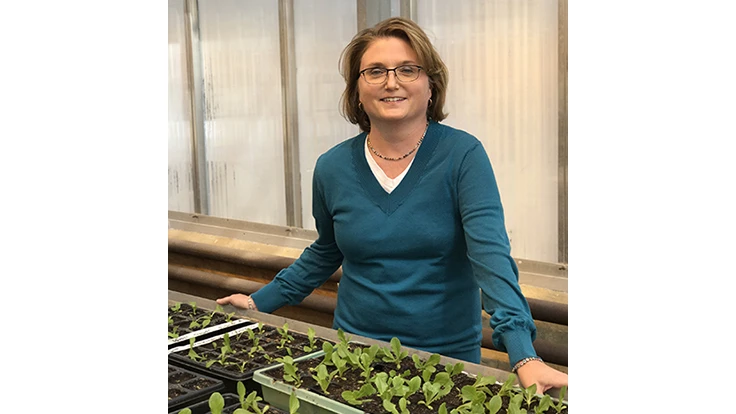
A Purdue University study has shown that Listeria monocytogenes can live inside the tissue of romaine lettuce, suggesting that conventional post-harvest sanitization practices might not be sufficient to kill the potentially lethal pathogen.
Research led by Amanda Deering, clinical assistant professor in the Purdue University’s Department of Food Science, showed that the bacteria could live within lettuce in every stage of the plant growth process, residing inside the plant tissue. As discussed in the research paper, “Listeria monocytogenes Internalizes in Romaine Lettuce Grown in Greenhouse Conditions” published in the April issue of Journal of Food Protection, L. monocytogenes can gain entry into the plant through cracked seed coats, small tears in root tissue during germination and damaged plant tissue. The researchers found that exposing lettuce to the bacteria could lead to infection of plant tissue in as little as 30 minutes. “Knowing this can happen, we need to keep it on our radar as we continue to follow good agricultural practices,” Deering said.
While commonly associated with ready-to-eat deli meat and hot dogs, outbreaks of listeriosis also have been caused by contaminated celery, cantaloupe, sprouts, and apples. Symptoms of listeriosis may take as long as two months to appear, and by that time, most people don’t connect the illness to something they ate, Deering said.
After the 2016 recall of contaminated packaged salads, Deering, Associate Professor of Food Science Haley Oliver, and Graduate Research Assistant Archana Shenoy began to investigate the persistence and internalization of L. monocytogenes in romaine lettuce, the fastest growing crop in the U.S. in terms of production, export and consumption. Their research showed L. monocytogenes in romaine lettuce can persist up to 60 days or until the time of harvest. The bacteria could be found throughout the plant tissue, indicating yet another way foodborne pathogens can reach consumers, especially in ready-to-eat foods.
At the Purdue Center for Food Safety Engineering, researchers are working on detection technologies as they shift their focus to what can happen to the seed and seedlings before planting. They aim to find pre-harvest control strategies to prevent produce contamination, particularly as sanitizers can only treat produce externally.
Latest from Quality Assurance & Food Safety
- Chef Robotics Introduces Pat-Down Capability for Meal Presentation and Sealing
- USDA Launches Regenerative Pilot Program
- Indoor Ag-Con Adds Food Safety Track to Conference Lineup
- IDFA Recognizes Federal Officials for Support of U.S. Dairy Industry
- Tetra Pak Acquires Bioreactors.net
- Fresh Del Monte Receives Rabobank Leadership Award
- São Paulo Earns Guinness World Record for Largest Municipal Food Security Program
- KPM Analytics Releases Ready-to-Use NIR Calibration Packages





